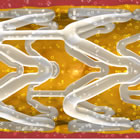|
That launch is now underway. However, the bioresorbable scaffold currently is not available for use in the United States. Abbott anticipates starting a U.S. trial by the end of this year -- and, if all goes well with the timeline, the company hopes to submit Absorb for U.S. FDA approval in 2015. According to the company's press release: Absorb is a first-of-its-kind device for the treatment of coronary artery disease (CAD). It works by restoring blood flow to the heart similar to a metallic stent, but then dissolves into the body, leaving behind a treated vessel that may resume more natural function and movement because it is free of a permanent metallic stent. Absorb is made of polylactide, a naturally dissolvable material that is commonly used in medical implants such as dissolving sutures. The potential long-term benefits of a scaffold that dissolves are significant. The vessel may expand and contract as needed to increase the flow of blood to the heart in response to normal activities such as exercising; treatment and diagnostic options are broadened; the need for long-term treatment with anti-clotting medications may be reduced; and future interventions would be unobstructed by a permanent implant.
"This innovation represents a true paradigm shift in how we treat coronary artery disease. With the launch of Absorb, a scaffold that disappears after doing its job is no longer a dream, but a reality," said Patrick W. Serruys, M.D., Ph.D., professor of interventional cardiology at the Thoraxcentre, Erasmus University Hospital, Rotterdam, the Netherlands. "Patients are excited about Absorb since it may allow blood vessels to return to a more natural state and expand long-term diagnostic and treatment options." The international launch of Absorb is supported by a robust clinical trial program that encompasses five studies in more than 20 countries around the world. Study data indicate that Absorb performs similar to a best-in-class drug eluting stent across traditional measures such as major adverse cardiovascular events (MACE) and target lesion revascularization (TLR), while providing patients with the added benefits associated with a device that dissolves over time. As the Absorb scaffold dissolves, vascular function is potentially restored to the blood vessel, allowing more blood to flow through the vessel as the body requires. Following is an animation, supplied by Abbott, depicting how the resorbable device works: Video not loaded
Reported by Burt Cohen, September 28, 2012 |


